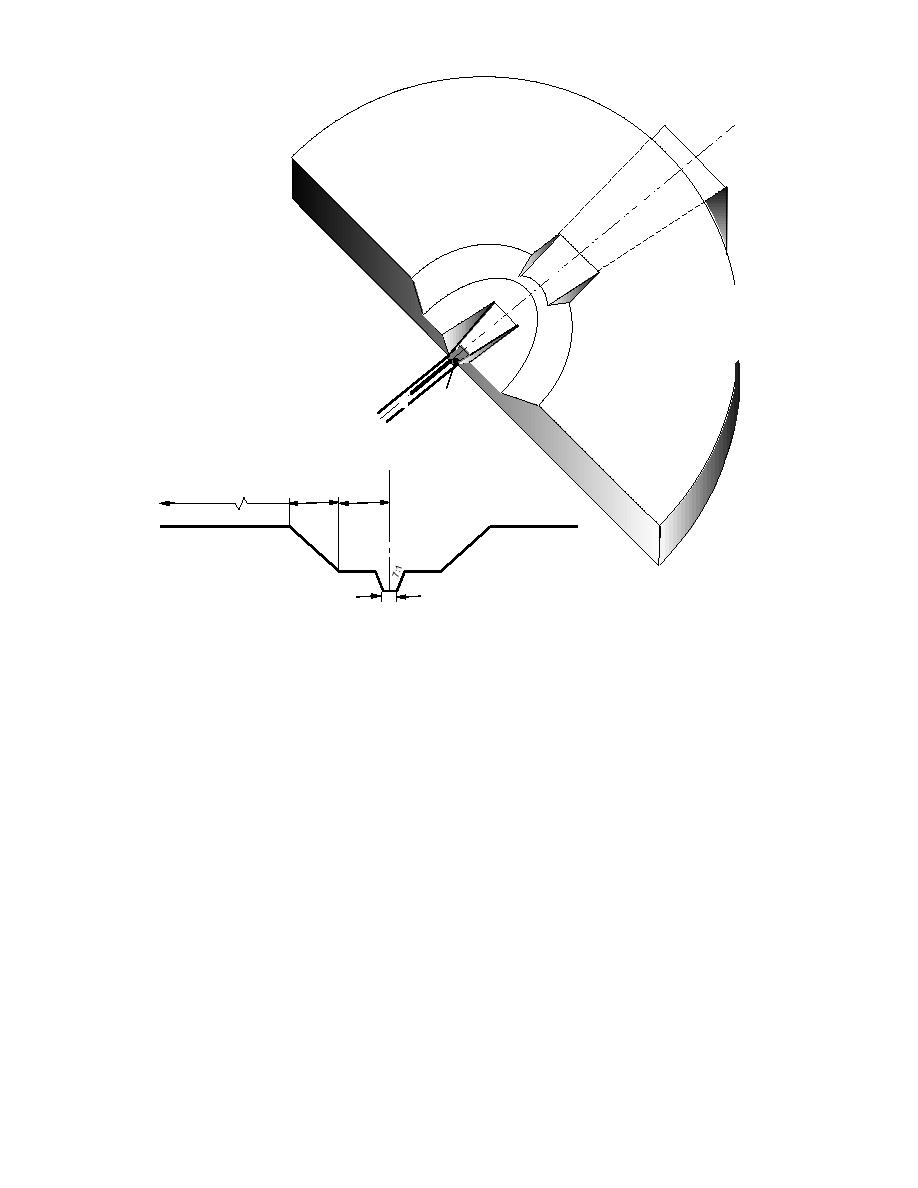
G
D
H
F
C
A. Primary Surface
E
H
B. Clear Zone Surface
C. Approach/Departure Clearance Surface
H
G
(40:1 slope ratio)
C
D. Approach/Departure Clearance Surface
E
(500' horizontal elevation)
F
H
E. Inner Horizontal Surface (150' elevation)
F. Conical Surface (20:1 slope ratio)
G. Outer Horizontal Surface (500' elevation)
H. Transitional Surface (7:1 slope ratio)
B
A
Runway
C
L
30,000'
7,000'
7,000'
500'
Elevation
G
:1
20
F
E
H
1000'
A
Figure 81. Exclusion zone maintained on the Pegasus runway during air operations.
The passenger terminal is a large (about 6 12
gasus, we used the guidelines given for U.S. Navy
m; 20 40 ft), heated modular building mounted
and Marine Corps facilities (Fig. 81; Department
of Navy 1982).
on skis (Fig. 83). Because as many as 1000 passen-
The Pegasus site is approximately 15 km (9 mi)
gers per season leave from the Pegasus runway
from Williams Field and 28 km (17 mi) from
in groups up to 60, this facility has comfortable
McMurdo during the flight operations time of
airport-terminal-style seats and reading materi-
year (Fig. 2). Thus, it is necessary to have a degree
als for passenger convenience. Every attempt is
of self-sufficiency on-site. During flight opera-
made to coordinate passenger arrival at the site
tions, we have the following facilities available at
with aircraft arrival so that waiting is minimized
Pegasus: generator shed, maintenance personnel
(our target was a 15-minute wait, just long enough
hut with cooking supplies and food, tool and parts
for the pre-flight briefing). However, timing is
shed, multiperson latrine, passenger terminal, and
not always exact, and the time required for cargo
a 75,000-L (20,000-gal.) fuel tank. All of these fa-
operations and fueling can vary. Potable water
cilities are sled mounted. All except the mainte-
is shuttled to the passenger terminal building
nance hut and tool/parts shed are moved to the
from Williams Field daily when flights are oper-
site one week prior to the first flight and removed
ating. A food supply for maintenance workers is
immediately when operations cease. These facili-
present on site and could be used in an emer-
ties are located, relative to the runway, as shown
gency for passengers and air crews. The passen-
in Figure 82 and Appendix E. Note that, except
ger terminal is equipped with a telephone to allow
for the fuel tank, all facilities are on the access
the crash/fire crew, meteorologist, and passen-
road side of the runway. This minimizes the
ger transport escorts to communicate with
potential for vehicle and aircraft interaction.
McMurdo and Williams Field.
82



 Previous Page
Previous Page
